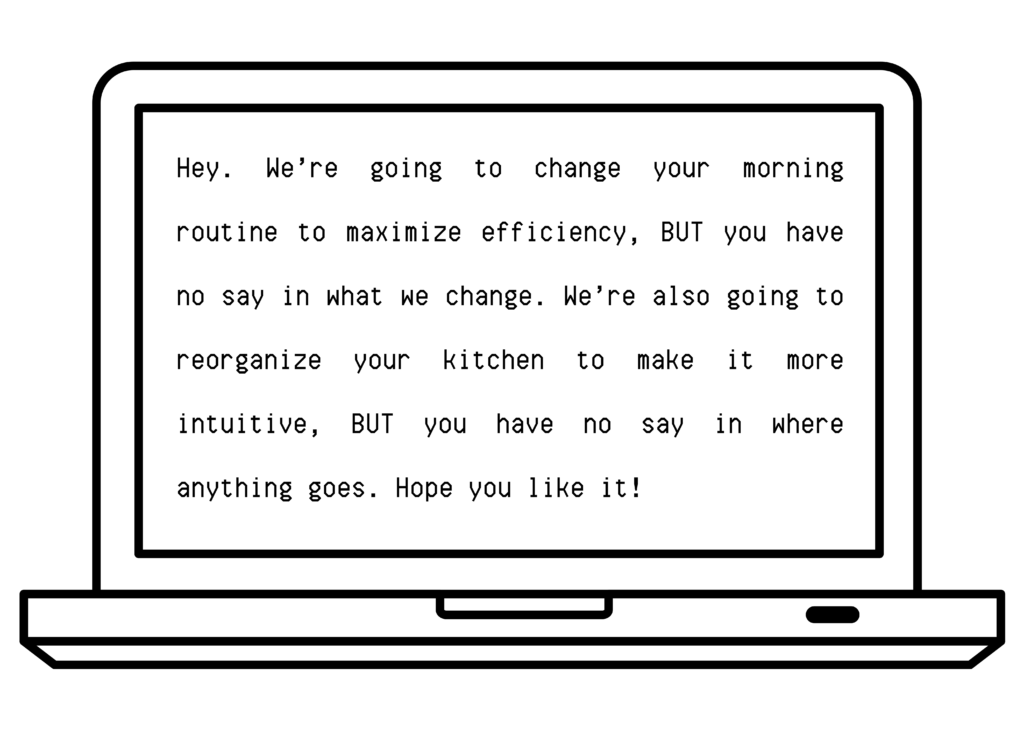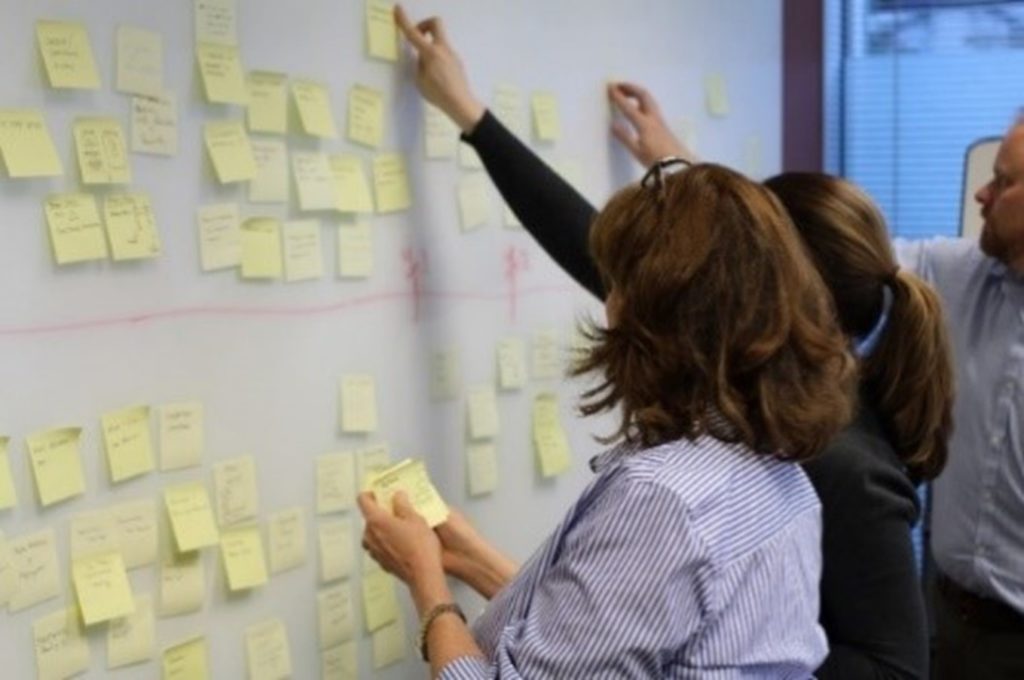12 Apr Engaging Stakeholders through Data Gathering

Obviously, that’s not going to work. If something’s going to affect your daily routine, you’d want input.
That’s why, when a new business project begins, it’s important to inform and include those who will be affected by the changes to come – that’s where stakeholder engagement and data gathering come in.
Both are critical processes to any project, but they’re often overlooked and rushed through for the sake of time. Here are some easy ways to engage stakeholders before, during, and after data gathering to achieve project success:
FIRST, WHAT IS DATA GATHERING & STAKEHOLDER ENGAGEMENT?
Data gathering is the collection and analysis of information, which is used to inform every aspect of project execution. Data is typically gathered through:
1. Face-to-face solicitation of information (this can be in-person or virtual)
Ex: Formal interviews, informal discussions, and interactive techniques (context diagramming, mind mapping, card sorting, etc.)
2. Social science methods and tools
Ex: Analysis of technologies, surveys, statistical sampling, observation
3. Traditional research
Ex: Organizational documents, reports or previous assessments, public company information, and industry articles and books
Stakeholder engagement is the process of involving employees in projects, giving them influence in the decisions that will ultimately affect them. To get stakeholders onboard, it’s important to understand how they currently work and identify how this project will impact (and hopefully, benefit) them.
You need effective stakeholder engagement to carry out productive data gathering, and you need the results from fruitful data gathering to contribute to successful project execution. Forming relationships with stakeholders and gaining insights that will support project decisions moving forward is what it’s all about!
BEST PRACTICES & CONSIDERATIONS
Data gathering and stakeholder engagement are standard processes for organizational projects. But don’t be fooled – it’s no easy feat. There are some key best practices and considerations to keep in mind to achieve the results you’re looking for. Here are a few:
Know why you’re doing it.
Before jumping into any data gathering, you need to answer three vital questions that will serve as a guide throughout the rest of the process:
1. Why is data gathering important?
If you have a background in project management, you probably already know the answer to this question. If not, you need to.
“The Blockers” of the organization are guaranteed to question the changes to come and the process to get there. So, when they reluctantly join your data gathering session, you’ll need to be able to answer why it’s a fundamental part of the project – again, information gained through data gathering informs every aspect of project execution.
2. What are you trying to accomplish?
As with most business-related ventures, you need to start with the end in mind. It’s critical to get on (and stay on) the same page with the leaders of the business. Get a good grasp of their goals for this project, and then ensure the data or information you seek supports those goals.
3. What questions do you need answered, and why?
Once you know what the end-goals are for this project, it’s time to determine what questions you need answered. Tailor your talking points to make it easier for your audience to give you the information needed. And be sure to fully utilize your time with your stakeholder groups – plan ahead and prepare questions that are deliberate and purposeful.
Explain what you need from the audience.
Once you know why you’re doing it, communicate it. Remember, stakeholder engagement is all about forming those connections. So, be transparent about your end goals and what information you’ll need from each stakeholder group.
But don’t forget – It’s also equally important to communicate what’s in it for them. As with any important relationship, if you just take, take, take, and forget to give back, you could risk losing stakeholders’ interest and support.
Utilize tools to collect data (and make it fun).
Sitting in a meeting and answering questions for a couple of hours isn’t on most people’s list of exciting ways to spend a Tuesday afternoon. So, it helps if you try to spice it up a bit.
There’s a whole world of tools out there, not only to facilitate data gathering, but also to enhance stakeholder engagement by making it fun.
For example, Mentimeter is a great interactive tool that can be used for both in-person and virtual data gathering sessions. Participants can remain anonymous while contributing feedback through live polls, word clouds, and quizzes. Polly and SurveyMonkey are also helpful tools, offering similar survey and poll capabilities that can be used in any type of data gathering session.

Use interactive techniques when possible.
Another way to make the sessions fun and lively is to use interactive techniques whenever there’s an opportunity.
Instead of standard, run-of-the-mill introductions at the beginning, you can play around with different ice breakers. This will warm up the group and make them feel more comfortable with each other, easing them into that Q&A session.
You can also leverage brainstorming, mind mapping, or context diagramming techniques to encourage participants to dive deeper on the topic and contribute to the discussion. While there are tools available to facilitate these activities, an easy technique is to provide whiteboards or sticky notes so participants can map out their thought processes.
Pivot when needed.
Never underestimate the need for a skilled facilitator.
A good facilitator is able to overcome common (and uncommon) pitfalls, remain flexible, and adjust the approach on the fly to enable a good outcome from a data gathering session.
When there are several people participating in a discussion, the conversation tends to go all over the place. Some participants will speak a lot, while others will keep to themselves. Good facilitators will ensure sessions are inclusive, paying close attention to the time and knowing when to “pivot” the conversation once a topic has been overdone.
Great data gathering facilitators will also pay attention to stakeholders’ verbal and nonverbal cues – then adjust accordingly. There’s no standard way of data gathering, so what works for one group won’t necessarily work for another. If the method you’re using (for example, context diagramming) doesn’t seem to be resonating with stakeholders, change it up and see if they respond better to another method (for example, informal discussion).
DON’T STOP THERE – KEEP STAKEHOLDERS ENGAGED!
Once you’ve gathered the data to support your immediate project need, you should inform your stakeholders on what comes next. It’s also important to show appreciation for their time and let them know their input is valued.
Lastly, don’t forget to keep the communication flowing. Your communications plan should include intentional check-ins with each group, routine status updates, various training resources, and shared tips or tricks. Remember, stakeholders are important to the project’s overall success throughout its lifecycle and beyond!
CONTINUE THE SERIES
Read the second blog in our series, “Data Gathering with Stakeholders: Can We Just Do This Ourselves?”



